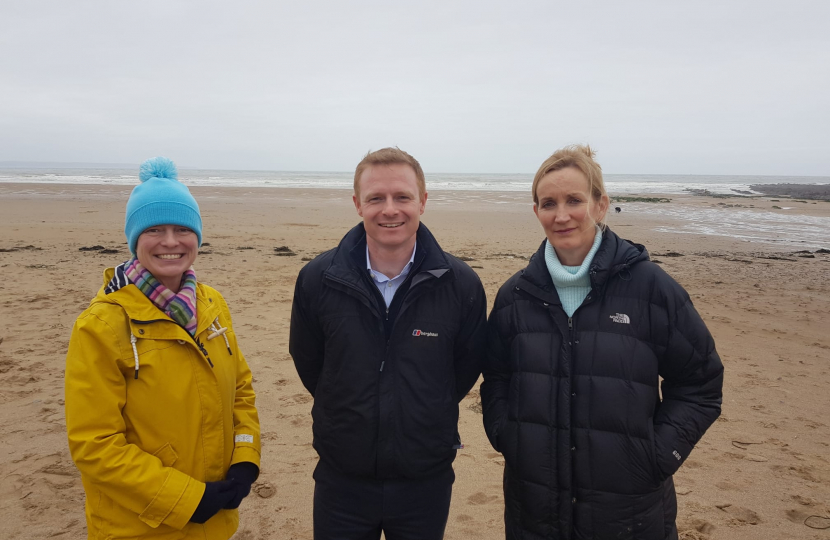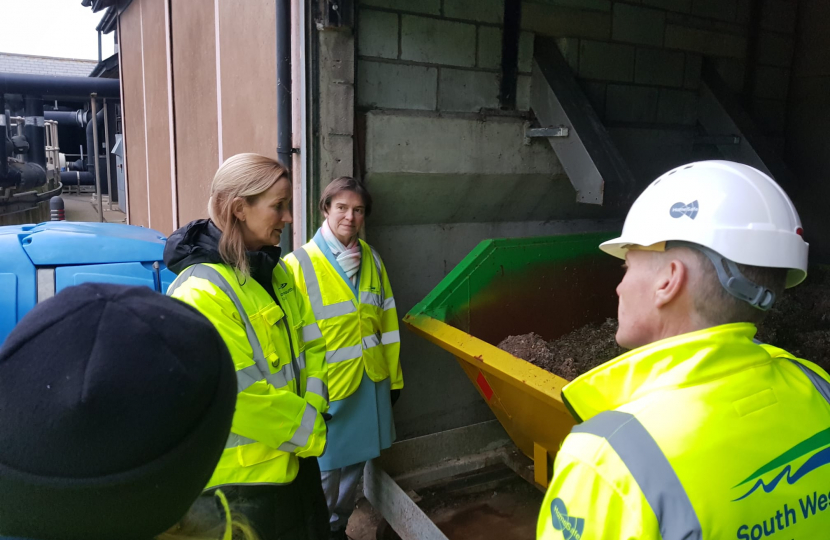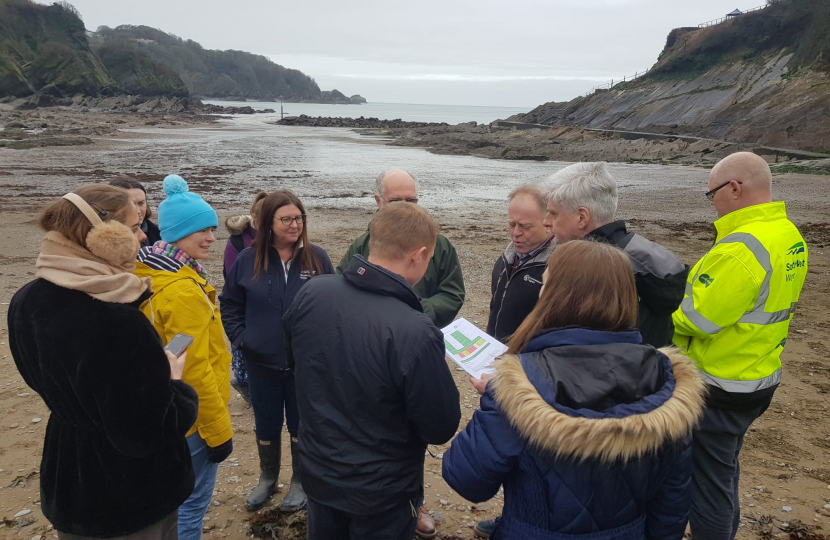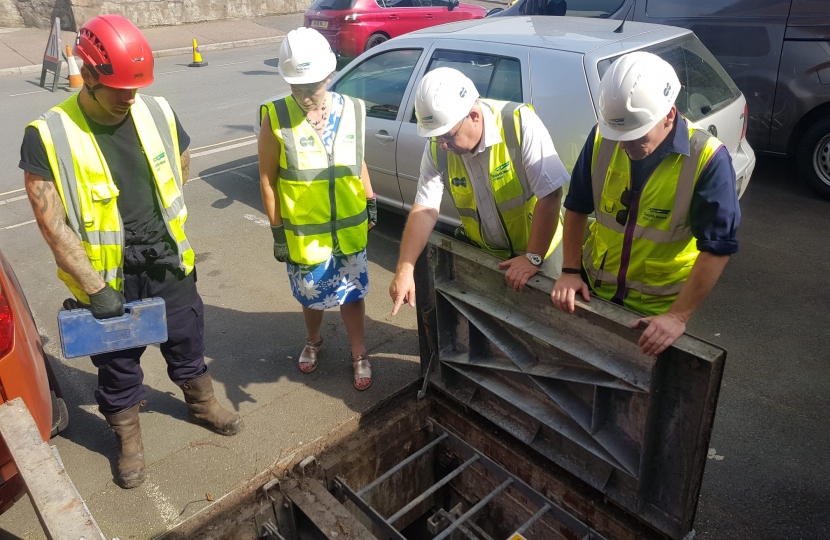I understand that matters like this are complicated and cannot always be explained by bullet points or memes, although South West Water do have a simple video that explains what effect the rain has on our beaches and how Storm Overflow Discharges are triggered: Rain stops play? How wet weather can affect our waters - YouTube
The Environment Agency have also produced some information on how they monitor water quality and what a Pollution Risk Forecast is: Gearing up for a summer of swimming in our bathing waters - Creating a better place (blog.gov.uk)
I hope this page and the relevant sections will give more clarity and goes some way to explaining why we are doing so much more now, in addition to what has been done over the last decade to address water quality and to address the misconception that our water quality is worse than it ever has been.
Updates:
You can find my most recent statement on storm overflows published on the 24th January 2024 here.
Storm Overflow Discharges
I know everyone has been concerned about the number of storm discharges and the effect it has on our water quality, particularly our beaches.
There has been a spectacular amount of disinformation and hysteria spread on the internet. Yes, storm discharges happen, we do not want to see them, but storm discharges are not new, we have had them for 150 years, they only appear to be happening a lot more because we have only just started properly monitoring them.
Since 2013, we have significantly increased transparency around storm overflows, with 100% monitoring coverage expected by the end of 2023. Additionally, the Environment Act requires data about spills to be published in near real time, which will allow government, regulators and the public to monitor performance and water companies must also implement monitoring of the environmental impact of their discharges.
One of the reasons that there are more reports of these discharges is that the government has required water companies to monitor more of their overflow pipes. In 2016 only 800 were monitored, by 2020 over 12,000 were monitored and water companies are obliged to monitor all 15000 by next year. We know about more incidents because there are more monitors, and it is factually inaccurate to compare the number of discharges in 2016 to 2021. However, we know climate change and population growth mean the risk will increase – which is why the government has taken significant action.
After the very dry summer we have had it was inevitable that there would be a series of discharges following the recent rain. In some cases, it did not need to be torrential rain, as the ground was so dry it could not absorb the water fast enough. If you have seen the video, think about what was posted on social media showing the river that was Clovelly after some heavy rain. Then think about months of dirt, dust, grime, remnants of dog faeces and agricultural mess all being swept into our rivers and seas over those few days. We do not need a storm overflow discharge for our waters to become heavily polluted quite quickly.
There are many occasions when the pollution has nothing to do with the water coming from our drains or across our land. Algae blooms are a common phenomenon and attached below is a document to explain what to look for and how to recognise them.
Combined Sewage Systems
Combined sewage systems mean that rainwater from drains and sewage use the same pipes underground. At times of high rainfall, the pipes reach capacity, and to stop sewage escaping into homes and streets, the system was designed to discharge to rivers or the sea via Combined Sewer Overflows.
A combined sewerage system does mean that most of the time, all of the dirty water flowing off fields, roads and off our rooves has a chance to be cleaned before hitting our rivers and seas. We do not want the storm discharges when the sewage system cannot cope, the alternative is that the same water would back up and spread through our homes and streets before making its way to the sea. Water will find its way to our rivers and the sea, be that what comes from the sky, what is flushed or what goes down our sink.
Privatisation and Investment and Monitoring
Since privatisation, the private water sector model has unlocked more than £150 billion of investment. This is equivalent to around £5 billion annually in investment and has delivered a range of benefits to customers and the environment.
Ofwat, the independent regulator, protects the interests of consumers by controlling prices, making sure water companies carry out their statutory functions and are financially resilient, as well as holding them to account on overall performance and the delivery of essential services.
The Government’s Strategic Policy Statement to Ofwat sets out long-term priorities for the sector, and how ministers expect the water companies to deliver for consumers and the environment. The Strategic Policy Statement sets an expectation that water companies will be challenged to demonstrate how they will deliver improvements to environmental outcomes, sets a new course so the industry can deliver more for the environment, and includes an expectation for Ofwat to challenge water companies to demonstrate how they will achieve zero serious pollution incidents by 2030.
The Strategic Policy Statement for Ofwat also sets an expectation on water companies to make progressive reductions in the adverse impacts from storm overflows, including reducing their frequency and volume. The landmark Environment Act has placed this ambition on a statutory footing, setting a duty for water companies to achieve a progressive reduction in the adverse impacts of discharges from storm overflows.
I am assured that the Environment Agency has driven up its monitoring and is supporting local authorities where needed and I understand that between 2020 and 2025, water companies will invest £7.1 billion on environmental improvements in England. Of this, £3.1 billion will be invested in storm overflow improvements specifically.
In March 2022, the Government published the Storm Overflows Discharge Reduction Plan consultation. This sets out plans to revolutionise how water companies tackle the number of discharges of untreated sewage. Water companies will face strict limits on when they can use storm overflows and must completely eliminate the harm any sewage discharge causes to the environment. I am aware that this will be the largest programme of work to tackle storm sewage discharges in history.
You can read my op-ed on all year round testing here: https://parliamentnews.co.uk/we-need-to-get-tough-on-the-water-companies-by-strengthening-bathing-water-regulations-this-is-why-i-am-proposing-new-legislation





